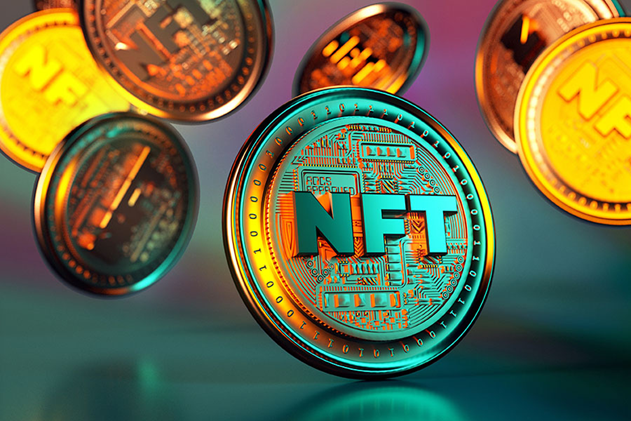Cross-chain non-fungible tokens (NFTs) are necessary for the growth of cryptocurrencies and multi-chain ecosystems.
Considering the current circumstances, centralized, opaque entities merit extensive discussion. All through 2022, we have experienced an endless series of calamities, the latest being the FTX crash. People are looking for solutions as their distrust of cryptocurrencies grows.
In a time of crisis, NFT is one of the fastest-growing industries. Also, not exclusively are digital currency goliaths like Binance showing certainty, however, certifiable utilization is speeding up. High-end brands like Gucci, sports icons like Cristiano Ronaldo, and even social networking sites like Reddit and Twitter are rapidly establishing NFTs. However, there is an issue. Although NFTs are safeguarded by distinct blockchains, we operate in an ecosystem with multiple chains. Therefore, cross-chain NFTs have a valid purpose.
What is an ecosystem of multiple chains?
In cryptocurrencies, there are numerous Layer 1 (L1) blockchains. Some are made to fit everyone, while others are made to meet requirements. Additionally, there are still a variety of choices available when it comes to scalability, performance, and security; consequently, there is still no definite winner for accepting everything, which leads to a fragmented network.
Initial difficulties with this idea include liquidity fragmentation and isolation. This issue has already been partially resolved by cross-chain bridging, which enables you to lock assets on one chain and remove them on another.
In a multi-chain future, consumers will not only be unable to access other ecosystems of fungible tokens like Ethereum (ETH) and Avalanche (AVAX) fragment.
This is due to the verifiable and trusted properties of non-fungible tokens, according to Bitcoin, a cryptocurrency expert. However, the Web3 community sees digital identities as the next logical step.
NFT and the use of digital IDs:
We all present a public image of ourselves online. Also, for good explanation. We are gradually shifting our online identities offline as the world becomes increasingly digital. Consider how you introduce yourself on different virtual entertainment channels like Twitter, Instagram, and LinkedIn.
It is your computerized character, an impression of your web-based self. Protecting your digital identity is important when working remotely during COVID-19 because it is the only way to communicate with others.
Take, for instance, the NFT frenzy of last year. Individuals are willing to spend thousands of dollars on their profile picture, or PFP. Avatars are people with faces in the virtual world.
This is likewise the justification for why individuals invest a ton of energy making content for their virtual entertainment accounts, purchasing computer game skins, and getting a charge out of introducing their advanced selfies to other people.
Social networks are extremely popular due to the same reason. You can thus establish your online presence.
However, given the ongoing virtual entertainment scene, we want assistance with advanced characters. Your computerized impression, including connections, cooperations, and content, can be deleted whenever.
Any aspect of a digital identity can be stored or transferred by NFTs. NFT comes into play here. You want to control who you are, but you can’t with today’s social networking apps.
The internet is gradually becoming a place where DeFi and Web3 have user ownership. Be that as it may, trust is absent in the current security of Web3, which is continually attempting to guarantee trust in the business.
Need for NFTs that cross chains:
Digital IDs must be chain neutral for NFT. Instead, it is portable just like your actual Persona.
Limiting the cross-chain NFT concept to a single blockchain is the only way to make it work. In a larger ecosystem of multiple blockchains, games, communities, and decentralized applications (apps) are distributed. For a multi-chain ecosystem to be sufficiently inclusive, interoperability is required.
Take the Metaverse, a public virtual world that anyone can access, as an illustration. NFTs will be the key connection interfacing the Web3 and the Metaverse, permitting individuals to move, exchange, and use symbols, things, and, surprisingly, land.
Some NFTs can be thought of as stores of value that want to move to another chain, regardless of their digital identities. This further emphasizes the need for cross-chain infrastructure.
A vibrant metaverse is built on top of the infrastructure for interoperability. We would develop a contained society like the one we currently have without it.
Non-fungible tokens (NFTs) that can cross chains are necessary for the growth of cryptocurrencies and the creation of multi-chain ecosystems. Much can be said about unified hazy substances considering recent developments. The cryptocurrency industry and its investors are always shaken by significant occurrences, such as a cryptocurrency’s demise. The goal is always to make cryptocurrencies safer for everyone involved. There are a lot of investors interested in NFTs because the market is expanding, and many investor security measures have been implemented. Some NFTs can be thought of as stores of value that want to move to another chain, regardless of their digital identities. This further emphasizes the need for cross-chain infrastructure. The groundwork for a vibrant metaverse is laid in this manner. We would develop a contained society like the one we currently have without it.
